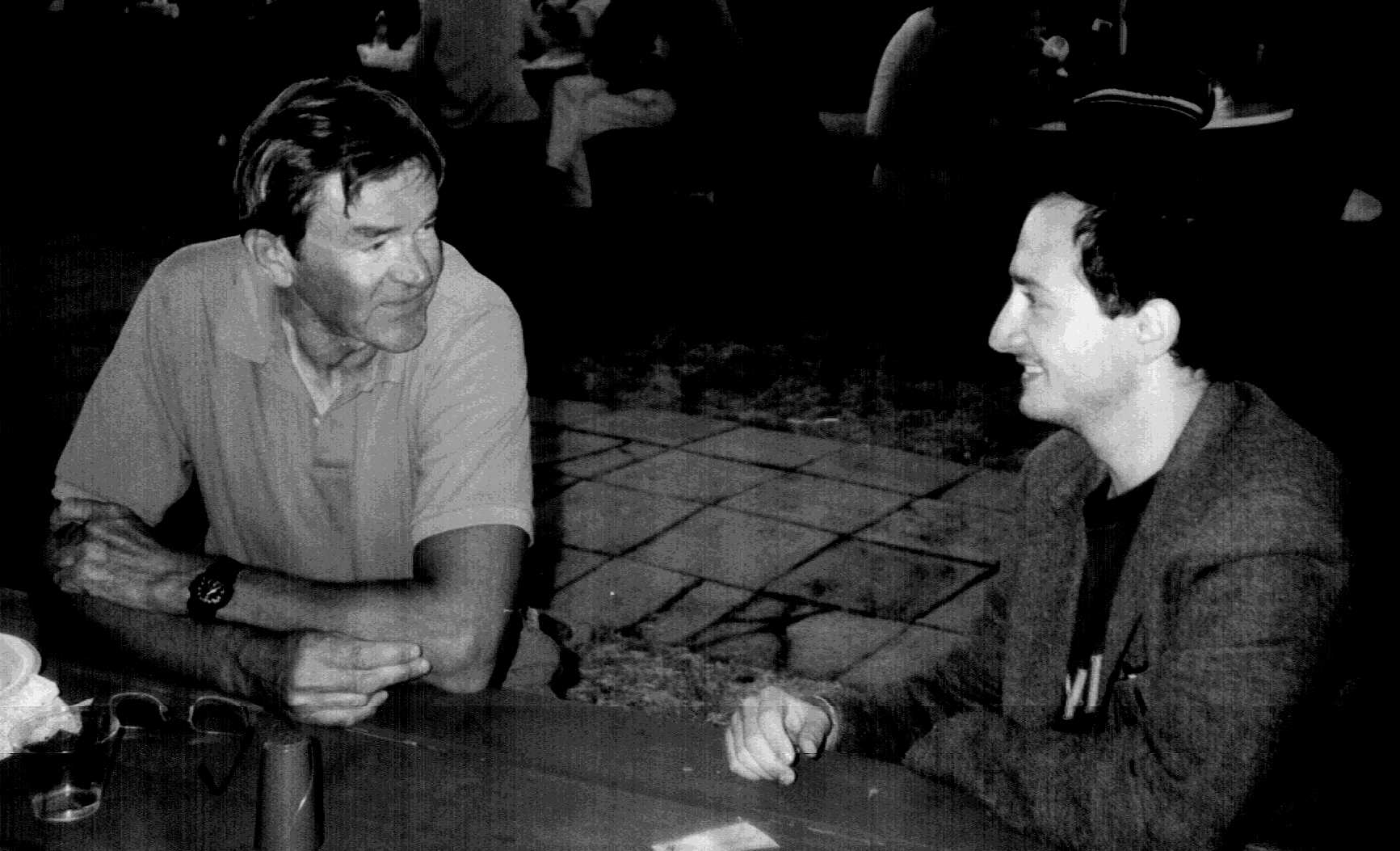"For predicting scaling in deep inelastic scattering, leading to identification of nucleon's pointlike constituents "
"Scaling" is a property of the cross section of subatomic processes involving the collision of an energetic electron with a proton or a neutron. I will explain what this is in a minute, but first let me explain what was our understanding at the time BJ made his prediction.

(Top: James and I, chatting amicably on the terrace near the SLAC auditorium, 1997).
At the end of the sixties Gell-Mann and Zweig had already hypothesized that the proton, the neutron, and other particles discovered in particle collisions could be composed of pairs or triplets of smaller, point-like entities: the quarks. However, nobody believed that quarks were real: they were considered just a nice mathematical trick to categorize and group together in subgroups of homogeneous elements the multitude of discovered new particles.
In order to probe the structure of the proton, one could hit it with an energetic electron, and study the rate of collisions as a function of the energy and angle of the projectile after the interaction. This was a clean experimental technique, as the electron was easy to measure; much harder was to make sense of the debris created by the fragmenting target, but by measuring energy and angle of the electron alone one pretty much had a complete handle of the process kinematics, as far as the deep, hard interaction was concerned.
In mathematical terms one could write the probability to observe the scattered electron with energy E' and angle θ from the initial direction, and study how that probability differed from what it would be if the proton had been a point-like electrical charge with which the electron exchanged an energetic virtual photon in the collision. The difference could be parametrized by two "structure functions" of the energy transfer and the electron recoil angle.
In similarity with Ernest Rutherford's scattering experiments with alpha particles hitting a thin gold foil, the scattering of energetic electrons off protons was thus bound to give information on the proton structure. Bjorken realized in 1967 that those structure functions ought to exhibit the property called "scaling" - of being, that is, independent on the actual energy of the scattering process, but only dependent on the adimensional kinematical properties of the scattering. The lack of dependence of these function on dimensional quantities reflected the fact that the electron was seeing, at the high energy of deep-inelastic collisions that started to be available at the time, point-like constituents within the proton, rather than dimensionful features.
The predictions of Bjorken were experimentally verified and they became a cornerstone in the soon-to-be founded theory of quantum chromodynamics, describing the behaviour of quarks and gluons inside hadrons. Nowadays Bjorken scaling can be symbolized by the very precise HERA measurements of protons' structure functions, such as in the graph below. The "scaling" is reflected by the near-flatness (as a function of Q^2, which measures the energy transfer of the scattering process) of the cross section measurements for individual values of the variable called "Bjorken x", the fraction of momentum carried by the struck quark in the proton.

I am very happy that Bjorken is recognized for his achievement, and I sent him my congratulations yesterday -to which he promptly replied. I had little doubt that he would, as Bjorken, at 81 years of age, is a true gentleman and a very kind person, as everybody who knows him can testify.



Comments